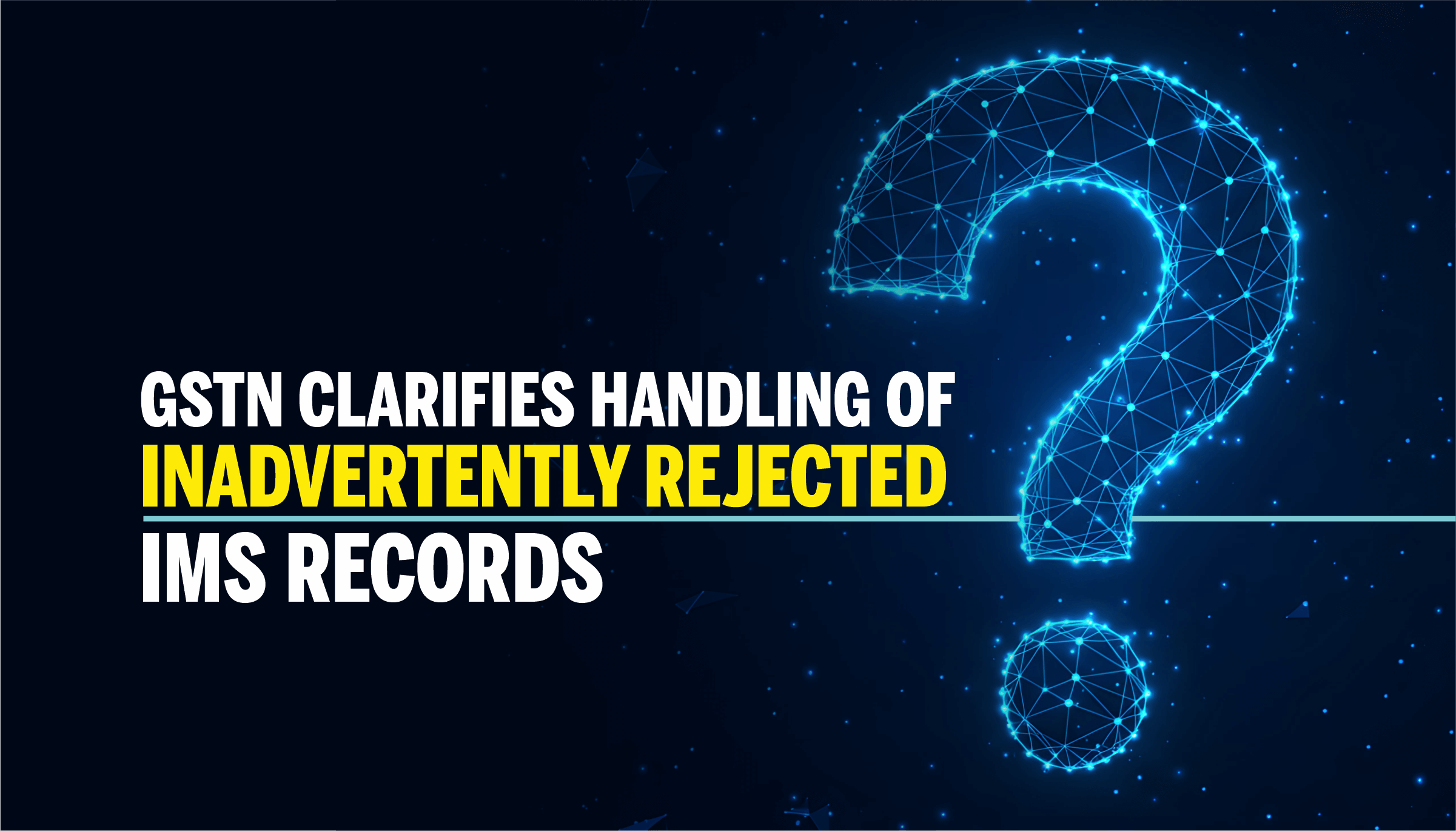GSTN Clarifies Handling of Inadvertently Rejected IMS Records

In a welcome move to address practical challenges faced by taxpayers, the GSTN has issued detailed FAQs on how to handle inadvertently rejected invoices, debit notes, and credit notes in the Invoice Management System (IMS). These clarifications are crucial, especially for taxpayers who have already filed GSTR-3B and later realize that records were wrongly rejected in IMS.
Let’s break down the issues and the solutions offered through the FAQs:
What’s the Problem?
With the introduction of the new Invoice Management System (IMS), a recipient can either accept or reject invoices uploaded by suppliers. However, in many cases, recipients accidentally rejected valid documents, even though the related ITC was already claimed in GSTR-3B. This mismatch raised confusion over how to correct these records and whether the recipient could still claim Input Tax Credit (ITC).
Key FAQs Explained Simply
Q1. How can a recipient claim ITC for wrongly rejected invoices if GSTR-3B is already filed?
Answer: The recipient should ask the supplier to re-report the same invoice (without any changes) either in the same period’s GSTR-1A or in the amendment table of a future GSTR-1/IFF.
Once the supplier does this, the recipient can:
-
Accept the invoice again on IMS
-
Recompute GSTR-2B on IMS
-
Avail the ITC based on the corrected record
The recipient gets the full ITC of the amended invoice since the original was rejected.
Note: This ITC will reflect only in the GSTR-2B of the concerned tax period.
Q2. Will this affect the supplier’s liability if they re-report the same invoice?
Answer: No, there’s no additional liability for the supplier. Why?
Because when the supplier re-reports the same record in GSTR-1A or the amendment table, the system takes only the delta (change in value). Since the re-reported invoice is identical to the original, the net liability change is zero.
Q3. How can a recipient reverse ITC for a wrongly rejected credit note after filing GSTR-3B?
Answer: In this case too, the recipient can:
-
Request the supplier to re-upload the same credit note in GSTR-1A or the amendment table of a future GSTR-1/IFF.
-
Accept the amended credit note on IMS
-
Recompute GSTR-2B on IMS
-
The system will automatically reduce the ITC by the full value of the amended CN (since the original was rejected).
Q4. Will re-reporting a credit note affect the supplier’s liability?
Answer: Initially, yes.
-
When a credit note is rejected, the supplier’s liability temporarily increases, as the credit note is not considered.
-
However, once the supplier re-reports the same credit note, the liability reduces again by the same value.
Final outcome: The supplier’s net liability remains unchanged in the long run.
Conclusion
The GSTN’s latest FAQs provide much-needed relief and clarity for both suppliers and recipients who are struggling with mistaken rejections on IMS. The corrective mechanism is simple:
-
Re-report the same record
-
Accept it again on IMS
-
Recompute GSTR-2B
These clarifications ensure no loss of ITC for recipients and no double liability for suppliers – provided timely action is taken.
